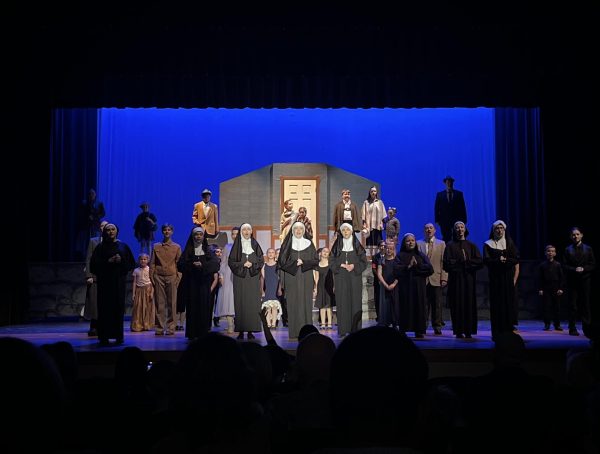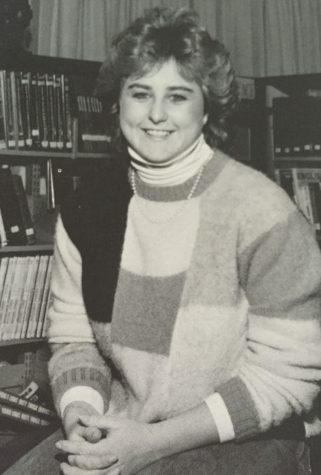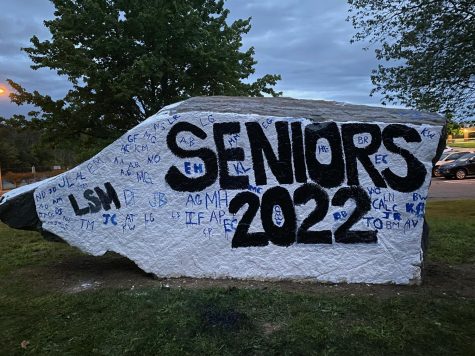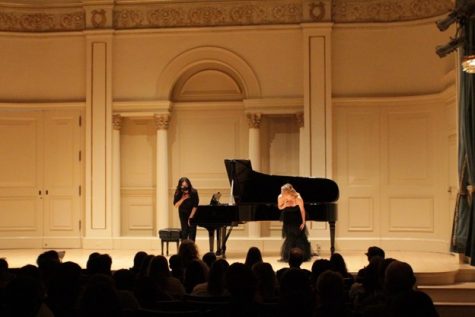Ravaging Literature
Books bear the brunt of our reading habit

A stack of well-loved books that students used this year in Region 10. Librarians, both in and out of school, have systems for weeding out and detecting damaged items.
May 4, 2018
As the red viscous liquid drips down the spine of yet another innocent victim, the vandalizer quickly throws the evidence into a drop box and flees the scene. Although it may seem strange, but dealing with vandalized books is just a part of a normal day for librarians all around the world.
Within the United States alone, there are about 157,685 librarians according to the the Online Computer Library Center. Many of these librarians have an important job of checking if a book is in good condition to be put back onto the shelf. For example, Wendy Cunningham, the circulation supervisor at the Burlington Public Library, states, “Items do come back damaged and then we have to make the call of whether the damage can be repaired, as in normal wear and tear, or if the damage is so severe that a replacement is needed, and then we bill.”
The Burlington Public Library has a meager catalog of books on its own, and when someone loses or damages one, “this can impact our small library greatly.” With such a small collection, the Burlington Public Library also shares books with 30 different libraries to have a greater amount of titles. Once someone destroys a book within one library, a domino effect occurs in which the people interested in the book within those 30 libraries won’t be able to read it. This has a negative impact on many people within the consortium of libraries, according to librarians.
Campbell Karanian, a freshman at Lewis Mills High School, faced this situation not long ago, when she couldn’t take out a novel because it was damaged. She stated, “I have experienced a time when I could not access a book because it was vandalized. I was going to check out a book of certain genre for my English class, when the librarian noticed there was apparent damage to the book, I wasn’t able to check it out.” Even though this was a shock to Ms. Karanian at the time, she knew that the librarian was only doing their job. The book was taken away, so it could then be quickly repaired with tape. If it wasn’t repaired right away, then the damage could have gotten worse over time.
Because of this, Ms. Karanian had to get a book other than the one she wanted. This is not an uncommon incident. About 4 to 8 percent of books within a library are unaccounted for each year, according to the American Library Association. This means that if a library has 10,000 books at the beginning of the year, they may end up with about 9,200 books at the end of the year which decreases the amount of choice a patron has available at a library.
Lilah Moley, another freshman at Mills, has also experienced the same problem.
“I was looking for a non-fiction book some months ago and found an autobiography on a musician that was perfect. I was planning on using the book for an English project. When I opened up the book, the front cover came off immediately. Whoever had the book before had taken out a few pages and destroyed some pictures inside,” she said. It was hard for her to see the destruction of the book as it was about one of her favorite musicians, David Bowie. “I really couldn’t believe what I saw, but once after seeing that, I could tell that vandalism of school books is becoming a problem.”
Hearing about Ms. Moley’s incident, Natalie Plebanek, a senior, looked appalled. She noted, “A library for many students is an easily accessible location that they can count on to receive information regarding a source, not a place to disrespect what others enjoy.” If someone purposefully destroys a book, Ms. Moley believes that it is “extremely obnoxious and unnecessary” since “it is already a privilege to be able to take out books in the first place.” Students are impacted by this vandalism greatly, even though it’s the librarians who have to find a solution.
Many librarians now encounter vandalism so often that they have created protocol in what to do when a damaged book comes back, or when a book never comes back at all. Mrs. Cynthia Dias, a teacher-librarian in Lewis Mills High School, has followed “A certain procedure that helps greatly when having to weed out a collection of books when they do not meet certain criteria.”
This procedure is known as MUSTIE, which stands for: Misleading, Ugly, Superceded, Trivial, Irrelevant, and Elsewhere. To the libraries standards, all the books (M) must be factual, (U) in good condition, (S) up to date or replaced, (T) of certain importance, (I) interests of the community and (E) connected to the theme. Mrs. Dias regularly checks the books within the library to meet the criteria, and if 2 out of the 6 words match up to the book, she knows it is time to let go. On the other hand, it is also sometimes difficult to discard the books. Usually, these books are thrown away and replaced, especially if they have mold on them since books get moldy and mold can spread to other books on the shelf, according to the librarians. Once this happens, a huge crisis occurs within a library in which there’s no undoing.
Regarding how the replacement of books impacts the school library, Mrs. Dias states, “Connecticut has been dealing with a budget crisis that has a negative impact on our library, this crisis has created a reduction in the book budget.” It is hard for her to buy more books each year, therefore, it is very important for people to treat books taken out from the school library purposefully and appropriately. All in all, as of now, the budget crisis is making it harder to replace or discard books for Mrs. Dias, but it is also important for all of the books within the library to meet certain criteria.
Unfortunately, the Burlington Public Library faced some unexpected damage earlier this year when a pipe broke and damaged parts of its newly remodeled building. After tending to the damage, the library reopened its new-and-improved facility no worse for the wear.
Books offer great value within libraries to adults and students all around the world. People acquire limitless amounts of information and inspiration from the books that are read, as well as an alluring desire to read.
“I want to make sure that when someone walks into our library, the different shelves are inviting and interesting to them,” said Mrs. Dias, a smile appearing across her face. “Anyways, books are needed in our time of modern technology.”








